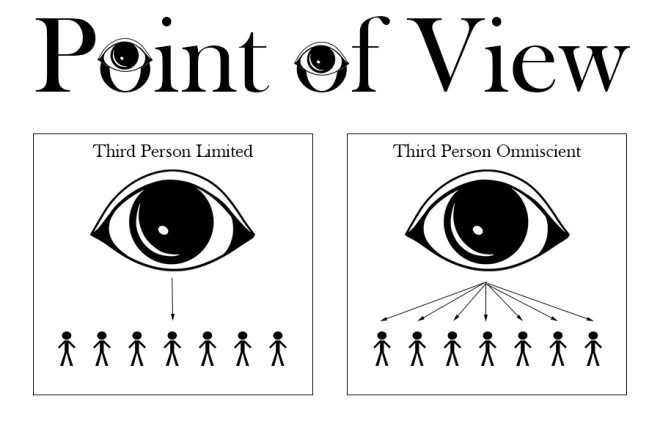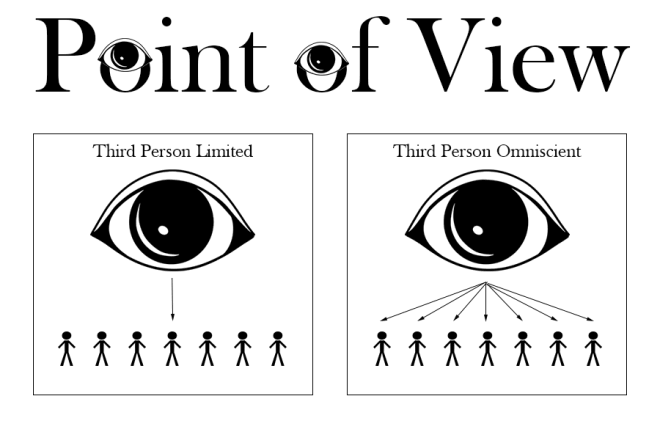Narrative Perspective: How to Tell a Story Through Manipulating the Lens
You may think that you already have all the elements of a perfect story once you build your world, untangle (most of) your plot, and figure out all your characters. Consider this though: Did you figure out how the story will be told? How will the major plots be revealed? Who gets to do the storytelling in the first place?
Narrative perspective refers to the set of rules and features that govern how a story is told. This includes the kind of narrator, the perspective through which the story is told, and any other technique that manipulates how the readers find out specific story details.
When someone talks about perspective, we usually assume that they’re talking about points of view or POVs: first-person perspective, second-person perspective, and third-person perspective. It’s not wrong, but there’s more to narrative perspective than POV. But while we’re here, let’s go ahead and discuss the five POVs.

-
First Person
Characteristics: personal pronouns, internal narrator, internal focalizer
This POV puts the least amount of distance between the audience and the narrative. The audience has all the knowledge that the narrator has. Usually, the narrator is also the protagonist or someone who works closely with them. The POV makes it seem that the narrative is something that the narrator has experienced personally. The main issue with this POV is that the audience is limited only to what the narrator knows.

-
Second Person
Characteristics: second-person pronouns, internal narrator, internal focalizer
This POV directly addresses the audience, which makes it awkward for most fiction narratives except participative fiction such as RPG/video games and “choose your own adventure” stories. This also works well for prose or poetry that is directed to a specific person. Second-person perspective works best with nonfiction, such as self-help books.

-
Third-Person Limited
Characteristics: third-person pronouns, external narrator, internal focalizer
Imagine the first-person perspective, but with third-person pronouns. This is how best to explain the third-person-limited POV. Third-person POV creates the most distance between the audience and the narrative. With this POV, the narrator only follows one character, so the limitations of what we know as the audience lies on one character alone.

-
Third-Person Omniscient
Characteristics: third-person pronouns, external narrator, external focalizer
The omniscient POV has some similarities with the limited POV: they both use third-person pronouns and places a great distance between the audience and the narrative. The difference is that the omniscient narrator knows everything about the story and everyone in it. Some omniscient narrators even comment on the story and the characters, teasing the audience that they know something more. This is a pretty powerful POV, but it can be challenging to balance the amount of information that is revealed to the audience at any given time.

-
Multiple
Characteristics: first- or third-person POV, external/internal narrator, internal focalizer
This POV may utilize either first-person or third-person-limited POV with a number of characters throughout the story. This makes it just as powerful, if not more powerful, than the omniscient POV. By using the multiple perspectives of different characters, more information can be revealed, withheld, or misled at any given time. The challenge with this POV is that it’s also the easiest to cause confusion among readers. This can be avoided by creating distinct narrative styles between characters and creating clear separations between POV switches, such as chapters and paragraph breaks.
Other than POV, there are also techniques that use perspective to manipulate what we know in a narrative.
-
Audience Surrogate
In some stories, a certain character becomes the representative of the confusion the audience experiences when discovering a story for the first time. This often works with first-person POV stories wherein the narrator is not the protagonist. The most popular example of this technique is Dr. John Watson from the Sherlock Holmes stories of Sir Arthur Conan Doyle.
-
Author Surrogate
While self-insertion is a pretty arrogant move and is often looked down on in fiction, some authors still manage to insert versions of themselves in their work. These characters, called author surrogates, presents the views and opinions of the author with the author being detached from the work.
-
Fourth-Wall Break
This is the technique of referring to the audience directly in a narrative. Sometimes, this is to give a disclaimer to the story; other times it’s to make the audience feel like they’re part of that world. An example of this is Rick Riordan’s Percy Jackson and the Olympians: The Lightning Thief, where at the beginning Percy tells the audience that the story he was about to tell is true, at least from his perspective. This also appears in Kate DiCamillo’s The Tale of Despereaux, where the external narrator talks directly to the reader multiple times throughout the story.
-
Defamiliarization
This technique takes something that we already know and presents it as something else entirely.
-
Magical Realism
With this narrative technique, the narrator assumes that magic is something that happens in reality, and talking about is normal.
-
Stream of Consciousness
A more personal style of narrative, the stream of consciousness is close to what one would call “word vomit.” Ideas made by the character are presented as it comes from their mind, without editing or without making an effort to make it coherent. An example comes from the film Bridget Jones’s Diary, which is told in first-person perspective and often switches to Bridget Jones’s thoughts as she writes in her diary.
There are plenty of ways to manipulate perspective into ways that could be beneficial to you and your work. By combining and carefully crafting a solid narrative perspective, you will be able to create a complex and compelling narrative that is impossible to put down.
Sources:
-
The 7 Narrator Types: and You Thought There Were Only Two! | Be kind rewrite
-
Reading fiction: narrator and character types | Study Guides and Strategies
*Disclaimer: Images are not ours. Credits to its rightful owners.
For affordable and professional proofreading, copy editing, and writing services, trust only inwrite.com!